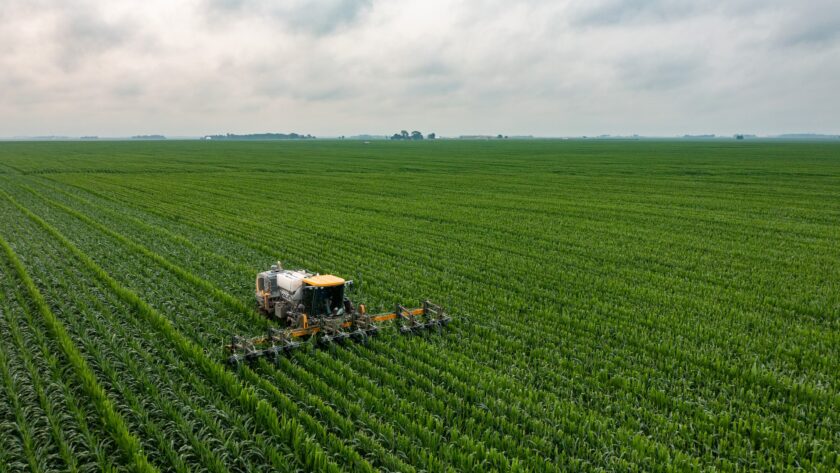Farmers need more time to maximize crop yield as the global population grows. Rising temperatures and decreasing water resources have made it difficult for traditional agricultural methods to be successful in producing healthy harvests. Fortunately, there is a range of innovative technologies and approaches that can be used to help increase crop yields while protecting valuable natural resources. In this blog post, we’ll explore six groundbreaking strategies for boosting crop production and setting yourself up for success as an environmentally conscious farmer or gardener.
Contents
- 1 1. Provide Balanced Nutrient Inputs
- 2 2. Invest in modern Farming Technology
- 3 3. Introduce New Varieties of Crops That are More Resilient to Weather and Pests
- 4 4. Incorporate Cover Crops Into Your Rotation
- 5 5. Install Netting Over the Crops
- 6 6. Optimize the Timing of Planting and Harvesting Seasons
1. Provide Balanced Nutrient Inputs
Healthy crops start with healthy soil, so providing balanced nutrient inputs is essential for a successful harvest. Using Organitek products, or those of another brand, such as Microbes, Nutrients, and Supplements can help you grow bigger, healthier plants that produce a higher yield than crops grown in soil with low nutrient levels. Also, using organic fertilizers like compost and manure will help your crops get all the nutrients they need without the harsh chemicals in synthetic products.
Additionally, it’s essential to monitor your soil health and adjust your nutrient inputs accordingly. By testing your soil and providing the appropriate minerals and nutrients, you can ensure your plants get what they need to thrive. With a healthy soil base, you’ll be well on your way to sustainably maximizing crop yields.
2. Invest in modern Farming Technology
The world’s population is growing at an alarming rate, and modern farming technology is proving to be an effective solution to the food supply problem. One such technology is precision irrigation systems that help farmers to conserve water, which is increasingly becoming a precious commodity in many parts of the world.
Another technology is using drones for crop monitoring, which enables farmers to detect plant diseases or pests much earlier than traditional methods allow. All of these technologies have the potential to boost food production and ensure global food security.
3. Introduce New Varieties of Crops That are More Resilient to Weather and Pests
As our climate continues to change, it’s becoming increasingly important to develop crops that can withstand unpredictable weather patterns and the threats of pests. That’s why we’re thrilled to introduce our new crop varieties, designed to be more resilient than ever. Whether it’s a drought, a sudden decrease in temperature, or a pesky infestation, our new crops are equipped to handle whatever comes their way.
Plus, they’re packed with all the same nutrients and flavor as the crops you know and love, so you won’t have to compromise on taste in the name of resilience. These new varieties have the potential to revolutionize the way crops are grown.
4. Incorporate Cover Crops Into Your Rotation
If you’re looking for a way to boost your soil’s health and improve nutrient cycling, incorporating cover crops into your rotation might be the solution. Not only do cover crops help prevent soil erosion and suppress weeds, but they also increase biodiversity and promote beneficial soil microorganisms.
By selecting the right cover crop for your soil and climate conditions, you can improve soil structure and increase organic matter, leading to higher yields and healthier crops in the long run. In addition, cover crops can even help reduce fertilizer input and mitigate the environmental impact of agriculture.
5. Install Netting Over the Crops
Farmers face the challenge of yearly protecting their crops from birds and other animals. It can be frustrating to spend time, effort, and resources growing crops only to have them destroyed in a matter of days by hungry birds or rodents. Fortunately, there is a solution: installing netting over the crops.
Netting creates a barrier that prevents animals from reaching the crops while allowing sunlight, water, and nutrients to pass through to help the vegetation grow. This is a simple but effective way to protect valuable crops and ensure that the efforts of farmers are not in vain. With netting, farmers can rest easy knowing that their crops are safeguarded from the pesky critters that would otherwise devour them.
6. Optimize the Timing of Planting and Harvesting Seasons
A crucial aspect of successful farming is timing. Getting the planting and harvesting seasons right is essential when aiming for maximum yield. It’s a delicate balance between choosing the optimum time to sow the seeds and reaping the rewards during harvest.
Factors such as weather conditions, soil quality, and the availability of seeds and labor all play a role. Farmers must meticulously plan and strategize their planting and harvesting seasons to ensure they produce the highest quality and quantity of crops. It’s a challenging feat, but with careful consideration, farmers can optimize their operations and achieve great success.
Farmers must be creative in finding solutions to maintain productivity and crop quality in the ever-changing environmental conditions. Investing in modern farming technology and utilizing new planting strategies is key to future success, no matter how large or small the holdings are. Furthermore, easy access to information technology can give farmers insight into the timeliness of planting and harvesting, which can help them stay ahead of market demand and increase profits.




